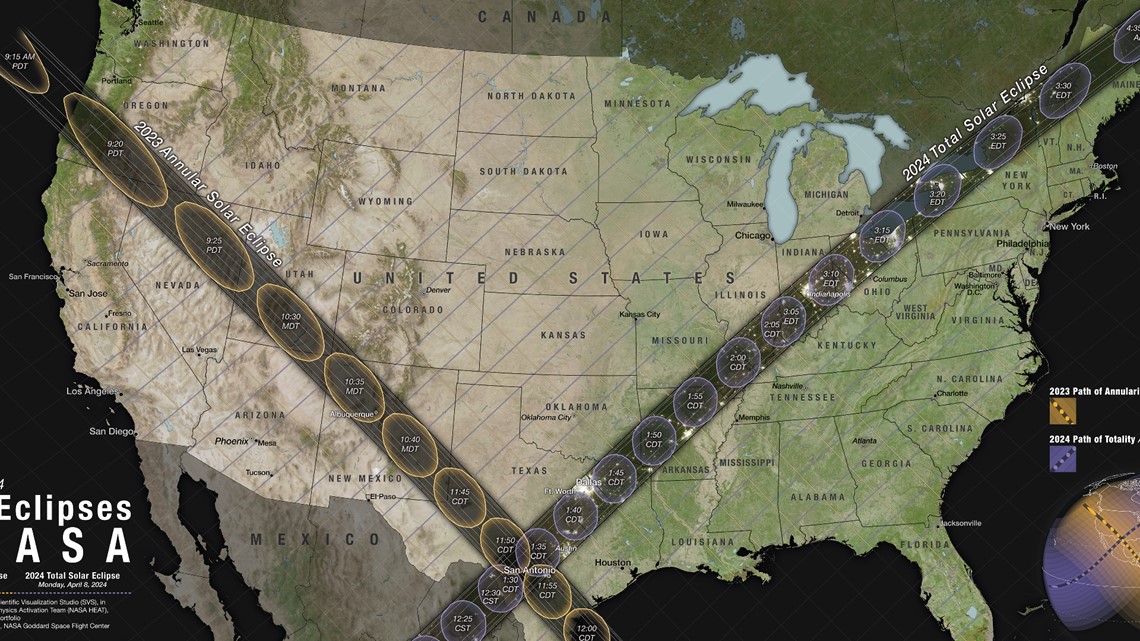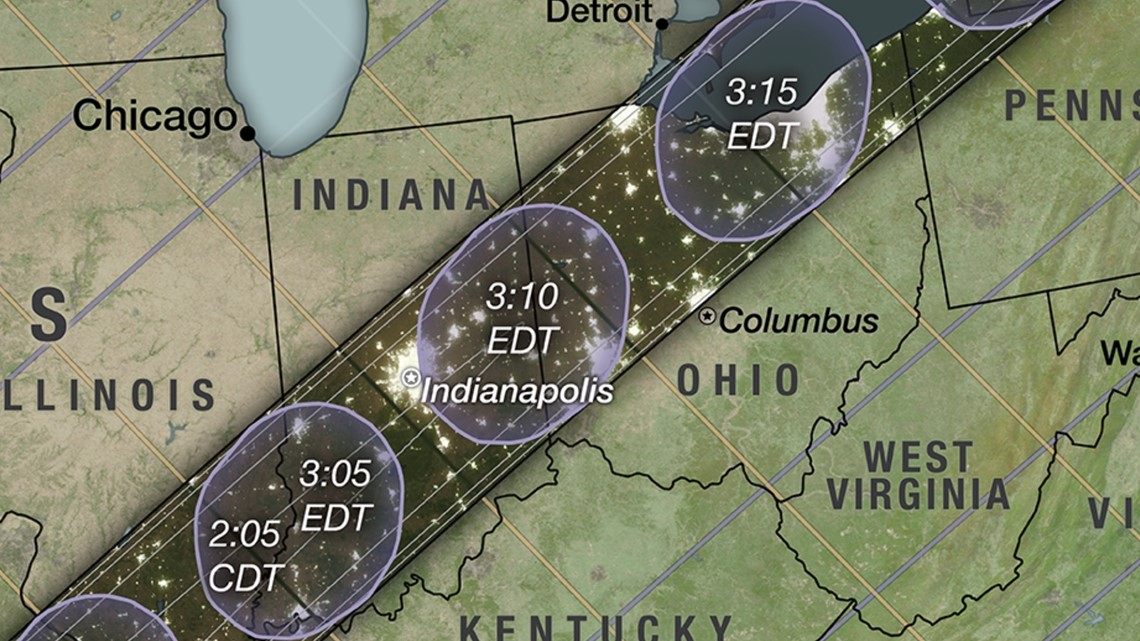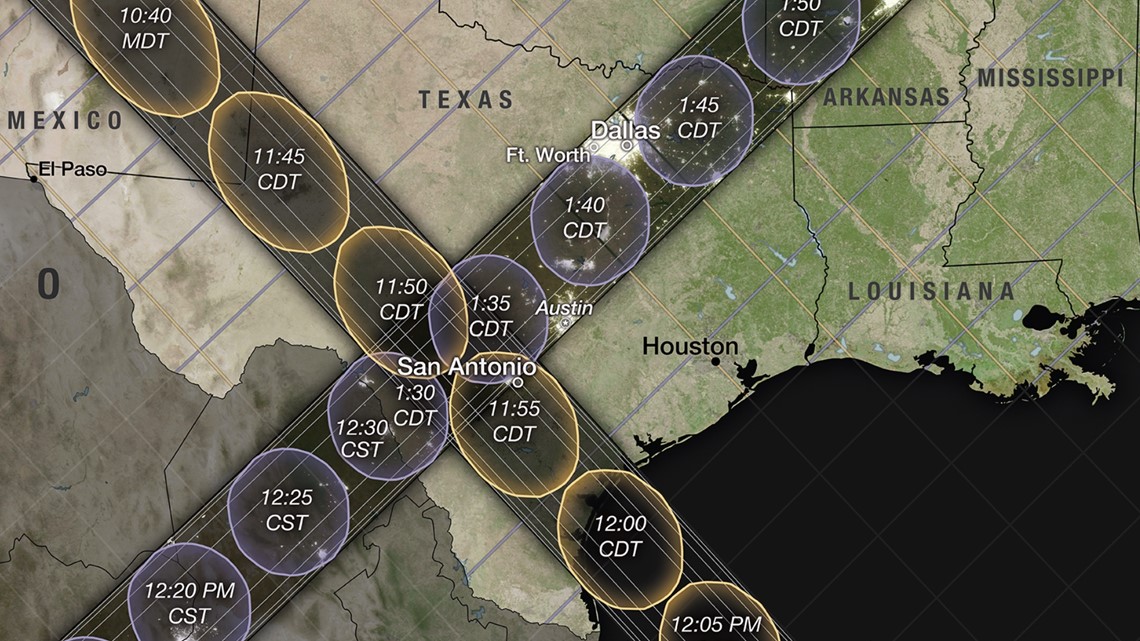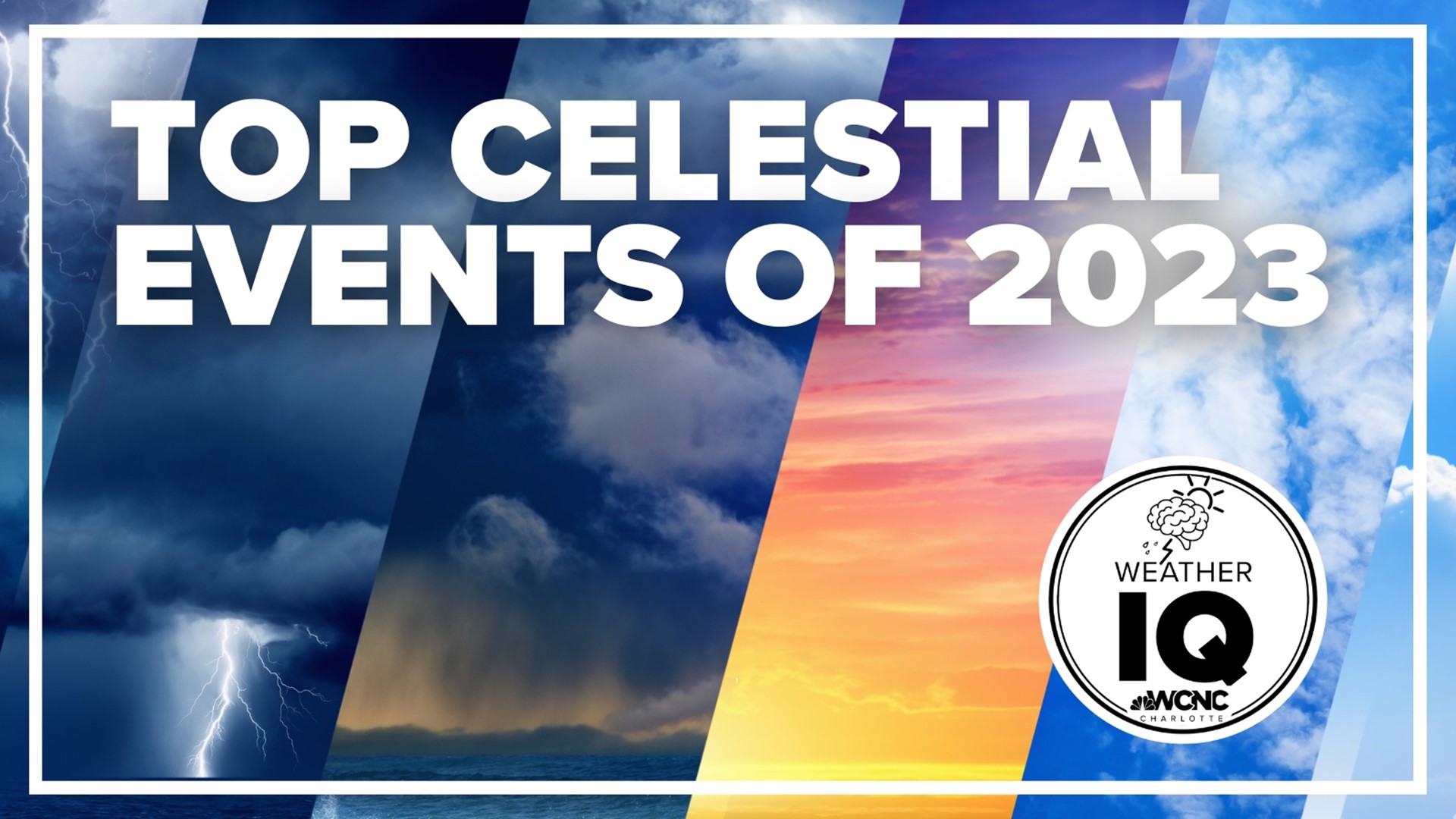Are you planning to watch the United States' next total solar eclipse in 2024? How about the annular solar eclipse later this year? Or... What about both? If so, you might want to start planning — unless you happen to be one of the lucky observers already in the two eclipses' paths.
This month, NASA released a set of detailed new maps showing the path of the moon's shadow as it crosses the country during the annular solar eclipse on Oct. 14, 2023, and the total solar eclipse on April 8, 2024.
The paths, crisscrossing the map in dark grey, show where you'll need to be to see each eclipse in its entirety. Anyone on the annular eclipse path, which sweeps from Oregon to Texas, will have a chance to see the "ring of fire" caused by the moon blocking the center of the sun.
WHAT TO EXPECT: Next total solar eclipse will be the last for US in decades
The 2024 total eclipse path stretches from Texas to Maine, meaning people in more than a dozen states could see totality — the eerie moment when the moon appears to blot out the sun. People outside the path of totality in the contiguous U.S. will still get to see a partial eclipse.


The closer you are to the center of the paths, the better. NASA says locations near the center will see the eclipse for longer than those on the outer edges. The thin white lines inside each path indicate how long you'll be able to see totality or the "ring of fire" there.
Inside the paths on the map, you'll see gold and purple ovals. NASA says these show the shape of the moon's shadow on Earth's surface at the times shown, meaning people inside the ovals will see the eclipse at those times.


Many people think of a solar eclipse as a once-in-a-lifetime viewing opportunity, but observers in one place have the chance to see two just months apart. A spot in Texas, including part of San Antonio, is in the path of both the annular eclipse and the total eclipse.


The lines outside the paths — yellow for the annular eclipse and purple for the total eclipse — show how much of the sun will be covered by the moon for observers there. Percentages appear on the bottom and right edges of the full map.
You can explore the map in detail on NASA's website, or watch the agency's video tour.
The map's designer was programmer and analyst Michala Garrison, who said it took "a lot of trial and error" to create a useful visualization that didn't overwhelm readers. She wanted to inspire others to see the eclipses in their full glory — something she didn't do during the U.S.'s last total solar eclipse.
“In 2017, I was in Maryland, so I still got to see a little bit, because I was in a partial eclipse,” Garrison said in a NASA news release. “But I didn’t really know any of this back then. This does make me want to go to, say, Albuquerque in 2023. And then in 2024 to go more south.”
After next year, the contiguous U.S. won't see another total solar eclipse until Aug. 23, 2044.

